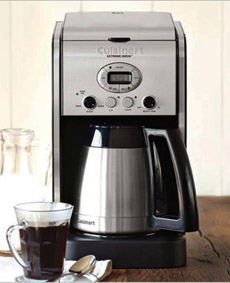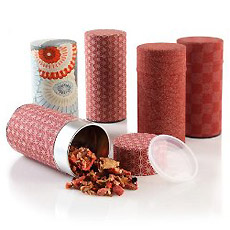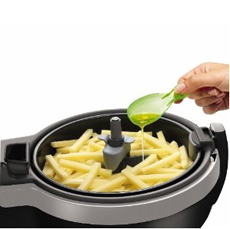|
Here’s the gift we bought for THE NIBBLE’s kitchen: the Cuisinart Extreme Thermal Coffeemaker.
We had a perfectly fine coffeemaker with a glass carafe. We made a full carafe each day, so our small team could enjoy coffee throughout the morning.
The only problem: Not everyone wanted coffee at the same time. After 15 or 20 minutes, coffee begins to scorch on the coffeemaker’s hot plate. So we’d turn off the machine; then warm the lukewarm coffee in the microwave, as needed. (Coffee connoisseurs may cringe at this thought, but a 20-30-second nuke works without harming the coffee.)
At our holiday party, we passed the glass carafe unit on to a NIBBLE staffer and unveiled this Cuisinart Extreme Brew 10-cup Thermal Carafe CoffeeMaker.
We’re happy with it. But we looked at some unhappy reviewer comments on Amazon.com and would like to address them, following our first week of experience with the unit:
|
|

Our holiday gift to us: a Cuisinart thermal
carafe coffeemaker for home or office.
Photo courtesy Cuisinart. |
|
Water Level. Two Amazon reviewers write that the reservoir and/or carafe doesn’t hold enough water for a 10-cup pot. That’s true if you use eight-ounce cups of water as the measure. However, the industry standard in coffee makers is a five-ounce cup. While this may sound strange to Americans, it’s a worldwide standard; Large mugs and oversized cups are not the norm elsewhere. So five ounces of coffee accommodates the standard eight-ounce cup (the size that comes with a set of dishes), plus room for milk and an inch at the top to avoid spillage.
Silver. In terms of “the silver looks cheap, not like our old Cuisinart which looked like stainless steel”: Alas, this is what has happened in the industry to keep prices down. Unless you’re paying double and triple for a top-of-the-line appliance, don’t expect the stainless steel. We recently needed to replace our 80s-era solid-metal Electrolux vacuum cleaner. The new one, made by the company that acquired Electrolux, is almost entirely plastic—and it cost nearly $1,000! We still keep a 25-year-old GE solid-stainless steel toaster oven that no longer works, as a souvenir of how beautiful appliance construction once was.
Pouring. We agree that the thermal carafe isn’t as precise a pour as a thin-lipped glass carafe. That’s a function of the thicker thermal casing. We were able to adapt to the new spout pretty quickly, and we don’t spill any coffee.
Hotness. We have thermal carafes—the kind used to carry coffee to work—that are champions, keeping the coffee hot for up to four hours (our favorites are from Nissan). Coffeemaker thermal carafes (we’ve tried three different brands) tend to work for half that time. Yet, it’s plenty of time for us to consume the full pot of coffee.
Trading up to a thermal carafe, we feel we’ve gained much more than just a good-looking appliance:
Transportability. Having a pot that can be transported anywhere and set down on any surface—dining table, home office desk, garage; or at the workplace, to conference room and offices.
Freshness. The thermal carafe keeps the coffee fresh for a reasonable amount of time. Even if it’s only an hour, that’s better than scorching on the hot plate after 15 minutes!
Control. We love the brew strength control that our older unit lacked.
TIP: Don’t Want To Buy A New Coffeemaker?
If you’ve got a thermos, just pour the coffee into it after you’ve had your first serving,
As with a coffee maker carafe, you need to use a bottle brush and soap to clean the thermos with every few uses, or bitter coffee oils build up.
Learn more about the Cuisinart Extreme Brew Thermal Coffeemaker
|






